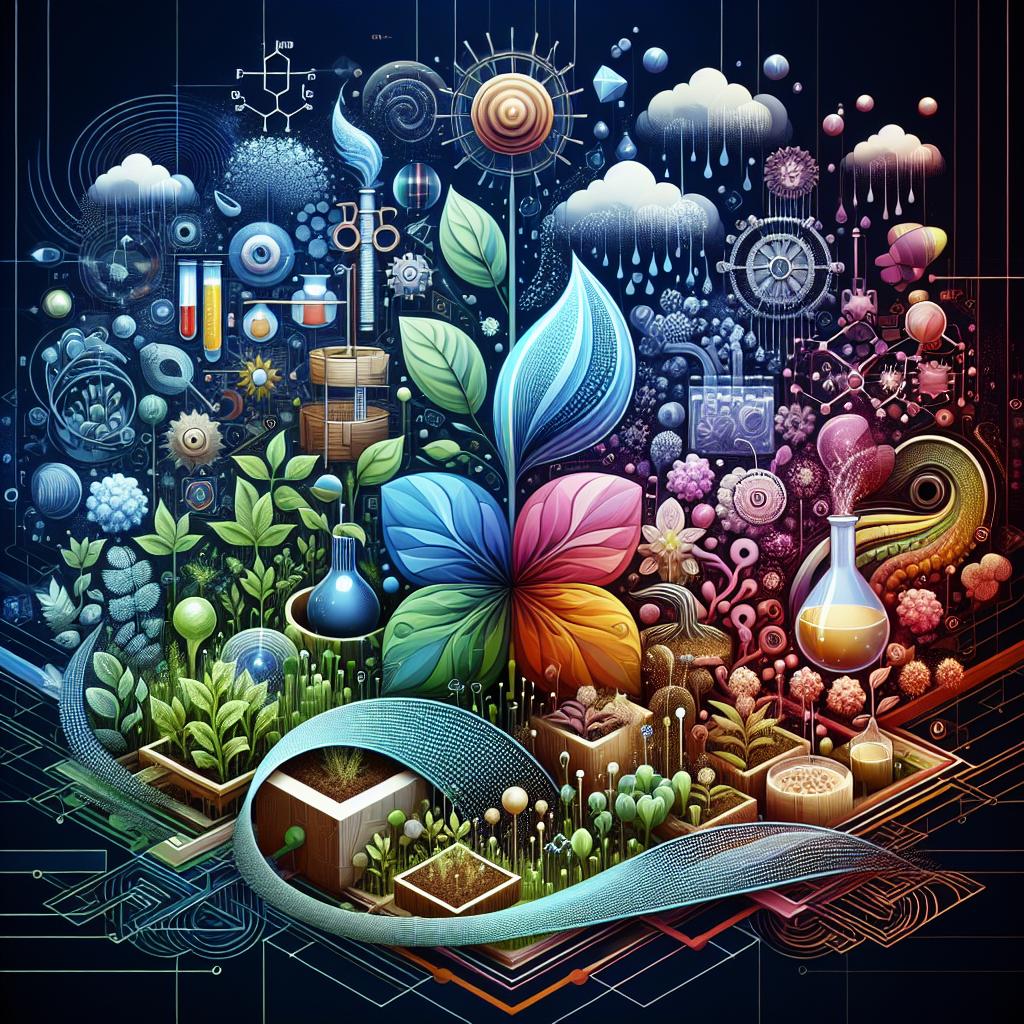This post may contain affiliate links which means I may receive a commission for purchases made through links. Learn more on my Private Policy page.
Understanding teh Importance of Proper Drainage in Irrigation Systems
Picture a lush, thriving garden where every plant stands tall, vibrant, and bursting with life. Now imagine that same garden,but instead,it’s a soggy mess,where the roots drown under the weight of excess water,and delicate seedlings struggle to survive. The difference? Proper drainage in irrigation systems! It’s the unseen hero in the battle for healthy soil and flourishing flora. Whether you’re a seasoned horticulturist or a budding backyard gardener, understanding drainage is key to promoting robust growth while preventing a cascade of problems. Get ready to dig deeper as we explore why proper drainage is not just a good idea—it’s essential for maintaining a harmonious and productive ecosystem in your garden!
The Backbone of Successful Irrigation: Why Proper Drainage Matters
Effective irrigation hinges on the ability to manage water not just for crops,but also to prevent the perils of over-saturation. Proper drainage systems play a crucial role in safeguarding plants from waterlogging,which can stifle root advancement and lead to disease. Fortunately, incorporating proper drainage strategies can relieve excess moisture, ensuring that plants remain healthy and vibrant. Consider these vital benefits of adequate drainage:
- Prevention of Soil Erosion: Well-designed drainage channels minimize the risk of soil erosion caused by standing water.
- Improved Soil Quality: Balance in moisture levels promotes better soil health, enriching it with necessary nutrients for strong crop growth.
- Enhanced Crop Yield: Healthy roots contribute to robust plants, translating directly into higher agricultural yields.
Moreover, the absence of a proper drainage system can lead to conditions that favor pest infestation and fungal diseases. Excess water can create an unhealthy growing habitat that hampers the development of crops, ultimately challenging farmers to maintain productivity. to further illustrate the importance of drainage in irrigation systems, consider the following table:
| Drainage issue | Potential Consequences |
|---|---|
| Waterlogging | Root rot, stunted growth |
| Inadequate drainage | Pest infestations, reduced yield |
| Soil erosion | Loss of fertile topsoil |
Integrating a robust drainage system can considerably bolster the effectiveness of any irrigation setup, creating a harmonious environment where crops can thrive. By being proactive about drainage solutions,farmers and gardeners alike will find themselves well-equipped to face the challenges of nature while ensuring the longevity and productivity of their plants.

Navigating the Balance: Preventing Waterlogged Soil for Healthier Crops
Proper drainage is critical in avoiding the saturation of soil, which can lead to numerous issues such as root rot and nutrient imbalances. To ensure optimal conditions for crop growth, farmers must be vigilant in monitoring their irrigation systems and making necessary adjustments. Here are some ways to effectively manage waterlogged soil:
- Regular Maintenance: Inspect and clean drainage pathways regularly to prevent blockages.
- Soil Testing: Conduct periodic tests to assess moisture levels and adjust irrigation practices accordingly.
- Drainage Systems: Implement a network of ditches, tiles, or other drainage methods to facilitate water movement.
Utilizing advanced technology can also play a significant role in maintaining the right balance of moisture in the soil. As an example, employing moisture sensors can provide real-time data on soil conditions, allowing for timely interventions. Here’s a speedy overview of some methods to ensure effective drainage:
| Method | Description |
|---|---|
| Surface Drainage | Involves grading the land to facilitate water runoff. |
| Subsurface Drainage | Utilizes pipes buried beneath the soil to collect excess water. |
| Wetland Restoration | helps to absorb and filter excess water naturally. |

Tools of the Trade: Essential Techniques for Efficient Drainage Solutions
Efficient drainage in irrigation systems isn’t just about managing water flow; it’s a comprehensive approach that requires the right tools and techniques to maintain healthy landscapes. One essential technique involves grading the land to direct water away from planting areas. This not only prevents waterlogging but also promotes optimal moisture levels for crops. Additionally, drainage ditches can be strategically placed to channel excess water, ensuring that irrigation is both effective and sustainable.
another crucial tool in the drainage toolkit is drainage tile systems. These underground pipes facilitate the movement of excess water, promoting aeration and preventing root rot in sensitive plants. Combine this with permeable pavements, which allows rainwater to infiltrate, and you create a solid foundation for effective water management. Utilizing rain barrels not only helps with collecting excess rainfall but also provides an eco-friendly alternative for irrigation during dry spells. Ultimately, investing in these tools and techniques sets the stage for thriving vegetation and robust agricultural practices.

Cultivating Success: Practical Tips for Maintaining Optimal Drainage in Your System
Effective drainage is vital for the health of your irrigation system,ensuring that water reaches plant roots without pooling or causing root rot. To achieve optimal drainage, consider these practical tips: Evaluate your soil type; sandy soils drain quickly, while clay soils can retain excessive moisture.Regularly inspect your drainage system for blockages and ensure that your pipes and ditches are free from debris.Implementing a layered approach by mixing soil types can also enhance drainage, allowing you to control moisture levels more effectively.
Incorporating proper grading in your landscape design can significantly affect how water flows within your system. Create a slope away from the foundation and towards designated drainage areas. Additionally, consider adding drainage tiles or French drains in areas prone to excess water accumulation. Here’s a simple table highlighting various drainage solutions:
| Drainage Solution | Best For |
|---|---|
| French Drains | Excess surface water |
| Drainage Tiles | Saturated soil areas |
| Catch Basins | Pooling water zones |
In Summary
As we wrap up our journey through the intricate world of irrigation systems, it’s clear that proper drainage isn’t just a technical necessity—it’s the heartbeat of a thriving garden or farm. Imagine your plants as singers in a grand symphony; without the right flow and balance, their melodies fall flat, leaving you with a dissonant chorus of wilted leaves and stunted growth.
By prioritizing effective drainage practices, you’re not just safeguarding your crops; you’re nurturing a vibrant ecosystem that fosters resilience and abundance. Whether you’re a seasoned gardener or just beginning to explore the joys of planting, remember that the path to healthy soil and flourishing plants is paved with the understanding and implementation of proper drainage techniques.
So, let’s dig deep, channel our inner plant whisperers, and create a flourishing future one droplet at a time. Here’s to healthy roots,lively blooms,and the sweet satisfaction of knowing you’re cultivating success from the ground up! Happy gardening!
This post may contain affiliate links which means I may receive a commission for purchases made through links. Learn more on my Private Policy page.

